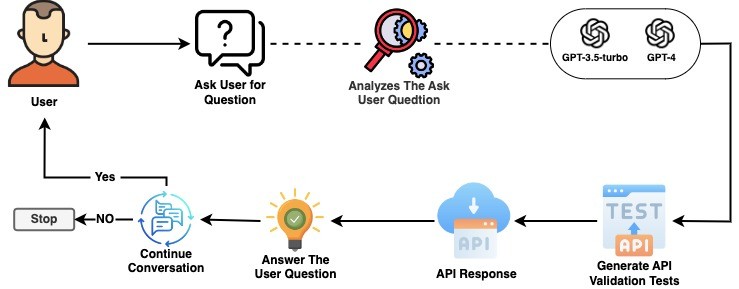- Getting Started with Generative Artificial Intelligence
- Mastering Image Generation Techniques with Generative Models
- Generating Art with Neural Style Transfer
- Exploring Deep Dream and Neural Style Transfer
- A Guide to 3D Object Generation with Generative Models
- Text Generation with Generative Models
- Language Generation Models for Prompt Generation
- Chatbots with Generative AI Models
- Music Generation with Generative Models
- A Beginner’s Guide to Generative Design
- Video Generation with Generative Models
- Anime Generation with Generative Models
- Generative Adversarial Networks (GANs)
- Generative modeling using Variational AutoEncoders
- Reinforcement Learning for Generation
- Interactive Generative Systems
- Fashion Generation with Generative Models
- Story Generation with Generative Models
- Character Generation with Generative AI
- Generative Modeling for Simulation
- Data Augmentation Techniques with Generative Models
- Future Directions in Generative AI
Chatbots with Generative AI Models | Generative AI
Introduction
A lot of people are researching and being interested in chatbots that are driven by generative AI models these days. Like, these chatbots can talk to people, answer questions in a way that sounds like a real person, and even help people with different jobs. This talks about why language models are important for building chatbots, how to use generative AI models to make chatbots, some examples of how they are used, and where people think chatbot technology will go in the future.
Importance of Chatbots
For conversational robots that can respond like humans, chatbots with generative AI models are essential. Large datasets are used by these models to understand the subtleties of language. This allows for personalized interactions, scalability, and low cost across a wide range of uses. Generative AI can help companies improve the user experience, streamline processes, and spur new ideas.
Let’s dive into these Chatbots with language generative models
- GPT-3.5-turbo
- GPT-4
Overview Chatbots with Language Generative Models GPT-3.5-turbo and GPT-4
GPT-3.5-turbo: Here is GPT-3.5 Turbo-0125, which has more accuracy, fewer bugs, and big cost saves. With 25% less money spent on output and 50% less money spent on sources, you can get better results for less money. Automatic changes make sure that all users can easily enjoy these benefits.
GPT-4: The most recent multimodal model from OpenAI, providing unparalleled accuracy and sophisticated problem-solving abilities. GPT-4, which is only accessible to paying users through the OpenAI API, performs exceptionally well on conventional completion tasks and is best suited for conversation apps. Check out our text generation guide to discover its possibilities now!
The Workflow of GPT-3.5-turbo & GPT-4

Implementation of Chatbots Using GPT-3.5-turbo & GPT-4 Models
Let’s go through a simple code to understand things better:
Step 1: Installing Dependencies
!pip install openai
Step 2: Import Libraries
import os
import openai
from openai import OpenAI
Step 3: Initializing OpenAI API Client
The OpenAI API client can be configured with an API key by using this code, which enables use of OpenAI's services for activities like text generation and natural language processing.
# Replace with your OpenAI API key
openai.api_key = os.environ.get("OPENAI_API_KEY")
client = OpenAI(api_key='Typing Your OPENAI_API_KEY')
Step 4: Initializing OpenAI API Client
This function generates API validation tests using the OpenAI API client. It takes a response, maximum tokens, and temperature as input parameters. The response parameter is used as a user message in the chat. The function then calls the OpenAI API to generate a completion based on the provided parameters, using the GPT-3.5 Turbo model. Finally, it returns the generated response content.
def generate_api_validation_tests(response, max_tokens=20, temperature=0.7):
response = client.chat.completions.create(
model = "gpt-3.5-turbo",
messages=[
{"role": "system", "content": "You are a helpful Chatbot assistant ."},
{"role": "user", "content": response}
],
max_tokens=max_tokens,
temperature=temperature
)
return response.choices[0].message.content
Either of these two models (i) or (ii) must be used.
(i) Using GPT-3.5-turbo Model
def generate_api_validation_tests(response, max_tokens=20, temperature=0.7):
response = client.chat.completions.create(
model = "gpt-3.5-turbo",
messages=[
{"role": "system", "content": "You are a helpful Chatbot assistant ."},
{"role": "user", "content": response}
],
max_tokens=max_tokens,
temperature=temperature
)
return response.choices[0].message.content
(ii) Using GPT-4 Model
def generate_api_validation_tests(response, max_tokens=20, temperature=0.7):response = client.chat.completions.create(
model = "gpt-4",
messages=[
{"role": "system", "content": "You are a helpful Chatbot assistant ."},
{"role": "user", "content": response}
],
max_tokens=max_tokens,
temperature=temperature
)
return response.choices[0].message.content
Step 5: Interactive Chatbot Loop
This piece of code builds an interactive loop in which a user asks a query and the chatbot uses API validation tests to produce a response. When the user clicks to continue the conversation or close the loop, the chatbot responds with a printed message.
# Start loop
while True:
# Ask user for a question
user_question = input("User: ")
# Generate response based on user's question
api_validation_tests = generate_api_validation_tests(user_question, max_tokens=20, temperature=0.5)
print("Chatbot: ", api_validation_tests)
# Ask the user if they want to continue
continue_response = input("Continue conversation? (yes/no): ")
if continue_response.lower() != "yes":
break # Exit the loop if the user does not want to continue
User Question and Chatbot Answer Output:
User: What is Generative AI?
Chatbot: Generative AI refers to artificial intelligence systems that have the ability to generate new content, such as images.
Continue conversation? (yes/no): yes
User: How does Generative AI work?
Chatbot: Generative AI works by using neural networks to generate new data that is similar to the training data it.
Continue conversation? (yes/no): no
Conclusion
The creation of chatbots has been transformed by the introduction of generative AI models, such as GPT-3.5 Turbo and GPT-4, which allow for more human-like interactions and improved problem-solving abilities. Businesses may enhance user experience, expedite procedures, and foster creativity in a variety of applications by utilizing these models. We may anticipate more developments in chatbot technology as the field of generative AI progresses, opening the door for even more advanced conversational agents down the road.
